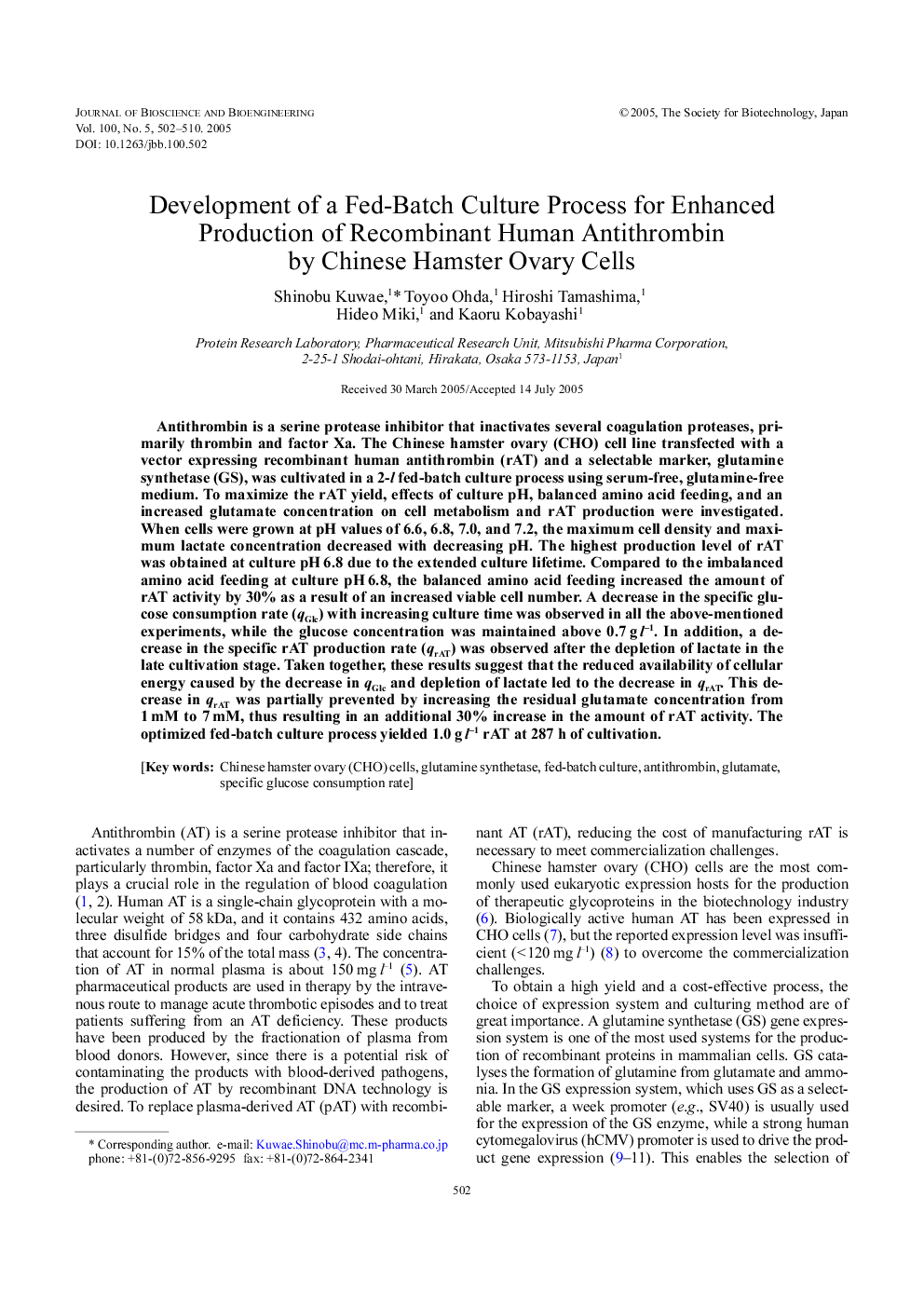| Article ID | Journal | Published Year | Pages | File Type |
|---|---|---|---|---|
| 9603105 | Journal of Bioscience and Bioengineering | 2005 | 9 Pages |
Abstract
Antithrombin is a serine protease inhibitor that inactivates several coagulation proteases, primarily thrombin and factor Xa. The Chinese hamster ovary (CHO) cell line transfected with a vector expressing recombinant human antithrombin (rAT) and a selectable marker, glutamine synthetase (GS), was cultivated in a 2-l fed-batch culture process using serum-free, glutamine-free medium. To maximize the rAT yield, effects of culture pH, balanced amino acid feeding, and an increased glutamate concentration on cell metabolism and rAT production were investigated. When cells were grown at pH values of 6.6, 6.8, 7.0, and 7.2, the maximum cell density and maximum lactate concentration decreased with decreasing pH. The highest production level of rAT was obtained at culture pH 6.8 due to the extended culture lifetime. Compared to the imbalanced amino acid feeding at culture pH 6.8, the balanced amino acid feeding increased the amount of rAT activity by 30% as a result of an increased viable cell number. A decrease in the specific glucose consumption rate (qGlc) with increasing culture time was observed in all the above-mentioned experiments, while the glucose concentration was maintained above 0.7 g lâ1. In addition, a decrease in the specific rAT production rate (qrAT) was observed after the depletion of lactate in the late cultivation stage. Taken together, these results suggest that the reduced availability of cellular energy caused by the decrease in qGlc and depletion of lactate led to the decrease in qrAT. This decrease in qrAT was partially prevented by increasing the residual glutamate concentration from 1 mM to 7 mM, thus resulting in an additional 30% increase in the amount of rAT activity. The optimized fed-batch culture process yielded 1.0 g lâ1 rAT at 287 h of cultivation.
Keywords
Related Topics
Physical Sciences and Engineering
Chemical Engineering
Bioengineering
Authors
Shinobu Kuwae, Toyoo Ohda, Hiroshi Tamashima, Hideo Miki, Kaoru Kobayashi,
